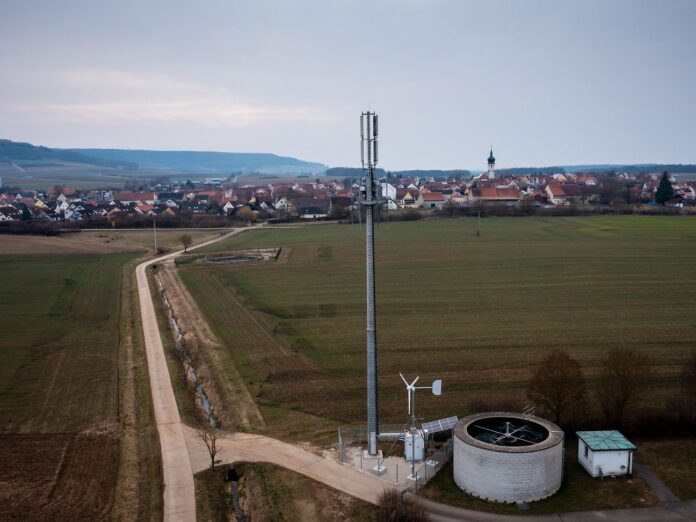Ericsson and Deutsche Telekom have added a wind turbine as a second renewable energy power source
German operator Deutsche Telekom and Swedish vendor Ericsson have carried out a trial in which they transformed a live radio site using a management solution to efficiently harness solar and wind energy while optimizing power supply and demand.
In a joint statement, the companies noted that the main aim of the partnership is to identify and validate energy efficiency and energy cost cutting solutions based on optimized energy consumption and control and increased usage of renewable energy sources.
The site, which is located in the Bavarian municipality of Dittenheim, has been partly-powered by energy from solar panels since the initiative began more than a year ago. Now, Ericsson and Deutsche Telekom experts have added a wind turbine, capable of providing up to five kilowatts of additional power, as a second renewable energy power source.
The partners noted that the simultaneous integration of the two renewable energy sources was made possible by the Ericsson Power System, a new Ericsson energy management product. This integration means the site can theoretically be operated on a stand-alone basis without utilizing its cable connection to the electrical power grid.
The companies added that the joint control of the two power sources and the batteries are integrated into the same management system that controls the Radio Access Network (RAN).
Also, batteries installed in current systems serve as storage in the event of a power outage. New Ericsson software and control mechanisms enable the management system to use the batteries as dynamic power storage units to make optimum use of the energy generated, according to the partners.
The control of the energy sources includes various functions for hazard prevention as well as automation. For example, in the event of a malfunction, the wind turbine can be automatically deactivated to prevent uncontrolled operation, the companies said.
The next phase of the project stipulates the development of additional functions for the efficient use of generated energy and storage capacities. In the near future, the integration of additional energy sources such as fuel cells will replace the need for diesel generators, which are currently kept in reserve for emergencies.
Leif Heitzer, SVP Technology Guidance and Economics at Deutsche Telekom, said: “Ensuring an integrated management of clean, efficient and reliable power sources and usage is key for sustainable mobile site operations. Together with innovative partners we explore in trials how we can apply intelligent solutions and capabilities to optimize energy consumption and control at mobile sites.”
Heather Johnson, Vice President for Sustainability and Corporate Responsibility, at Ericsson, said: “At Ericsson, we are committed to working with our customers to support them in cutting their carbon emissions. This partnership is a great example of how we’re achieving this through our best-in-class energy efficient equipment, which can be operated entirely with renewable energy.”

